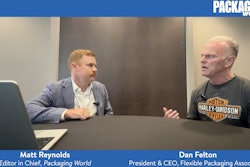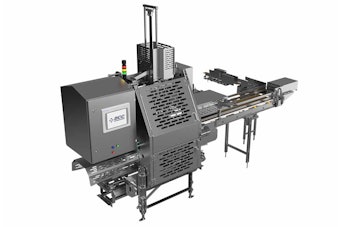What follows is an Intermediate Vendor Evaluation Analysis methodology that is well-suited to f/f/s equipment. Broadly, the process breaks down into four phases:
1. Canvass the field. Before you put together your Request for Quote (RFQ) document, take some time to broadly canvass the field of suppliers and look at options, getting a rough idea of prices and capabilities. A simple checklist of requirements will suffice at this stage. You’re just looking for a rough guide—don’t hold them to it without furnishing a formal RFQ.
2. Write your requirements document and RFQ. Put together a detailed requirements document of what the project will require, and use that as the basis for the RFQ. It’s critical to have everyone on your cross-functional team review the RFQ before it goes out to the vendor, to ensure that it addresses areas important to each team member.
3. Issue the RFQ. You’ll want to issue your RFQ to ideally three, but no more than six, packaging suppliers. With the responses you get back, rate them using the Intermediate Vendor Evaluation Analysis spreadsheet tool (see download link, left).
4. Conduct the Intermediate Vendor Evaluation Analysis. When you get quotes back from vendors, rate their responses and plug them into the Intermediate Vendor Evaluation Analysis spreadsheet. Make sure your entire cross-functional team’s input goes into the scoring procedure! This can be achieved either by everyone sitting around a table and achieving a group consensus score-by-score, or by having each team member score the vendor quotes separately, and then compare results—whichever works best for your team. This team scoring approach is especially critical if the machine or technology is a first-time buy.
The Intermediate Vendor Evaluation Analysis is designed for critical machines on the line, including a f/f/s machine. This spreadsheet tool separates the assessment of the machine builder from the machine. The tool rates each vendor across seven key areas, including prior experience, manufacturing capability, engineering and project management, company management, support, delivery, and references.
Use the bottom tab to select a second worksheet that allows the rating of the actual machine itself across nine key areas, including technical risk assessment, throughput, reliability and maintenance, changeover, machine design, ergonomics, operator interface, safety, and cost.
To mitigate against the tendency of giving a middle-of-the-road “5” score to ambiguous criteria, restrict your scores to a 1, 3, 6, or 9 (on a hypothetical scale of 1 to 10, where 10 is best). This will force out a differentiation. If you don’t have prior experience with the vendor, it helps to speak to the vendor’s other customers who have similar products, and use that as the basis for your scores.
The spreadsheet provides a total weighted score for each vendor and machine. While the spreadsheet can’t pick a vendor or machine for you, it can be a system for helping to make sense of and evaluate the mass of information you’re receiving from vendors.
Some tips on filling out the spreadsheet:
1. Maintenance and spare parts. To judge the number of high-maintenance parts, ask the supplier about the spare parts kit they provide as standard, including wear components. Look for fewer wear components and fewer overall components, as well as whether they are minor versus major machine components. Check how easy it is to swing away the seal jaws without tools to gain access to the sealing area for easy cleaning. Look for standardized components that can be purchased either locally or from multiple sources.
2. Complexity of design. To assess the complexity of the machine design, look at how many parts or components a subassembly has to accomplish a given task. If one machine has two parts and another has 10 to accomplish the same function, the one with the smallest number of parts in general has the most efficient design. But make sure to take flexibility into account. If the machine with 10 parts allows for far more bag sizes and styles, that’s to your advantage.
3. Weigh cost accordingly. In North America, CPG companies tend to focus overly on cost, not on value. The spreadsheet gives a default weight of only 10% to cost, but like any number in the spreadsheet, you can modify it as you see fit. At your company, that number may be higher, but a best practice is not to exceed 20%. Cost shouldn’t be the overriding determinant of whether you buy a given machine—functionality should.
Liked this article? Download the entire playbook here.


























